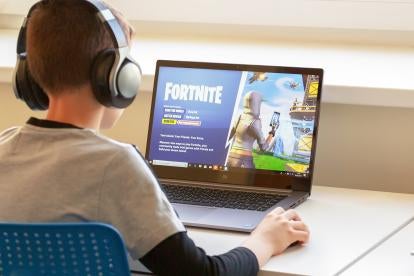In a rare ruling on infringement of a copyright on choreography, the US Court of Appeals for the Ninth Circuit reversed the dismissal of a copyright infringement action, holding that the district court erred in its application of the substantial similarity standard in terms of the line between animation and choreography, and remanded for further proceedings. Hanagami v. Epic Games, Inc., Case No. 22-55890 (9th Cir. Nov. 1, 2023) (Murguia, C.J.; Paez, Nguyen, JJ.)
Kyle Hanagami, a Los Angeles-based choreographer with a substantial social media following, brought this action against Epic Games, creator of the blockbuster video game Fortnite. Hanagami alleged that Epic infringed his copyrighted choreography by incorporating a portion of his dance work into a virtual animation, known as an “emote,” that players can purchase for video game avatars to perform. Hanagami has created choreography for famous pop stars and globally recognized brands. The five-minute choreographic work at issue in this action was originally published on YouTube in November 2017 and had received almost 36 million views as of Hanagami’s original March 2022 complaint.
In August 2020, Epic released a version of Fortnite that included a new emote called “It’s Complicated.” The allegedly copied choreography consisted of a two-second combination of eight bodily movements set to four beats of movement, which Hanagami alleged “contain[ed] the most recognizable portion” of his choreography. Hanagami brought federal claims alleging direct and contributory infringement of a copyright, as well as a state law unfair competition claim.
The district court granted Epic’s motion to dismiss wherein Epic asserted that Hanagami had not plausibly alleged that the Fortnite emote displayed “substantial similarity” to his choreographic work. Hanagami appealed.
At issue in this appeal was whether the district court had properly applied the Ninth Circuit’s two-part test for substantial similarity in assessing Hanagami’s infringement allegations. The first part, called the “extrinsic test,” focuses only on the protectable elements of the plaintiff’s expression and assesses the objective similarities between the original and the allegedly infringing work. The second part, referred to as the “intrinsic test,” gauges similarity of expression from the perspective of the ordinary reasonable observer and is reserved for the trier of fact. Hence, at the pleadings stage, only the extrinsic test is applied.
The Ninth Circuit concluded that the district court erred in its application of the extrinsic test in two ways. First, the district court incorrectly analyzed Hanagami’s choreography as a series of unprotectable “poses,” rather than as a movement sequence that includes expressive elements such as body position, timing, use of space, energy, pauses and repetition. The Court explained that when a dance work is properly analyzed as a selection and arrangement of movements, Hanagami “plausibly alleged that the creative choices he made in selecting and arranging elements . . . are substantially similar to the choices Epic made in creating the emote.” Second, the district court erred in dismissing Hanagami’s claim because the choreography in the emote was “short” and a “small component” of the original work. The Ninth Circuit noted that while de minimis copying may not be actionable, there is no bright-line rule regarding the smallest protectable quantum of expression. As the Court observed, “short does not always equate to simple,” and Hanagami plausibly alleged that the copied portion was far more complex than other short dance sequences that Epic cited as examples of works that the US Copyright Office has deemed uncopyrightable.
Practice Note: Choreography has been protected by the copyright statute since 1976 but is rarely litigated. Hence, application of the substantial similarity test to dance works is not a robustly developed area of copyright law. Courts may look to the Copyright Office’s guidance documents on the subject as well as analogous cases involving musical works when applying the substantial similarity test to choreography.
Karen Gover, law clerk in the Boston office with a focus on intellectual property litigation matters, authored this article.



 i
i


